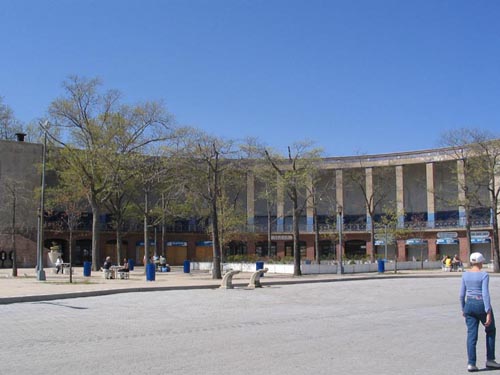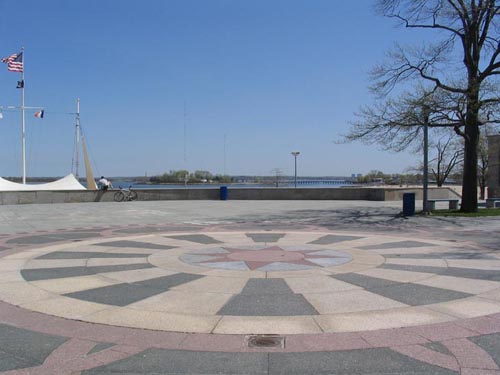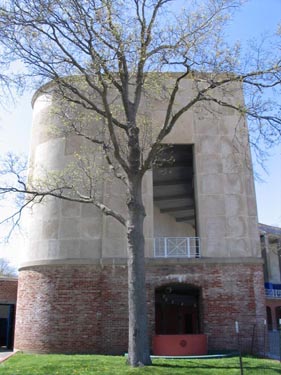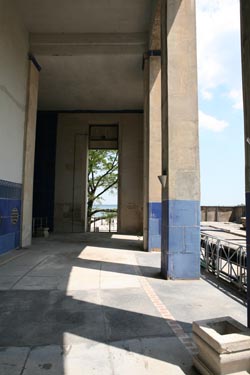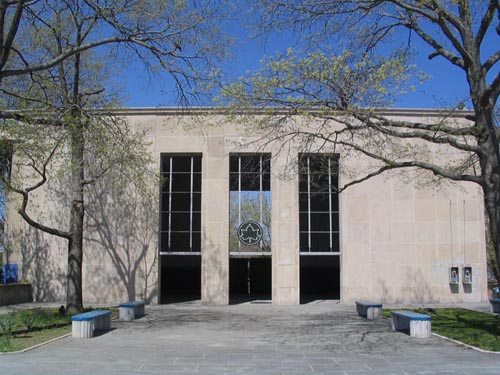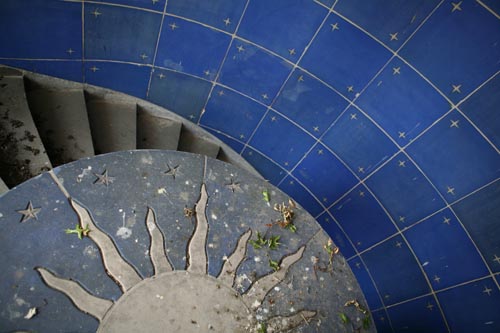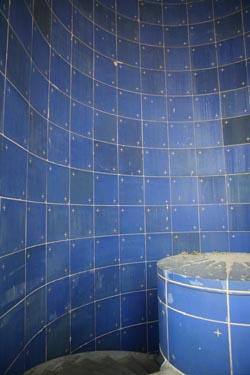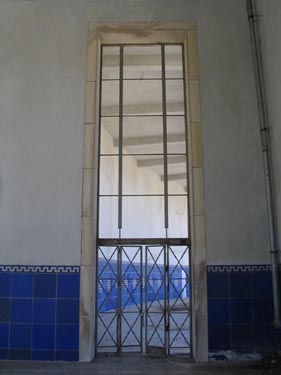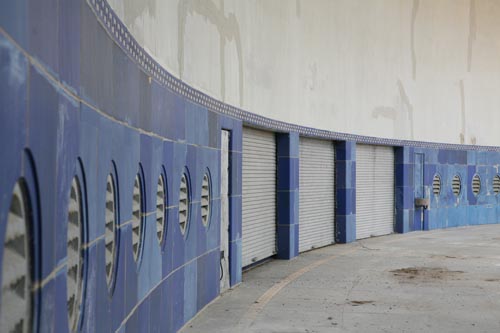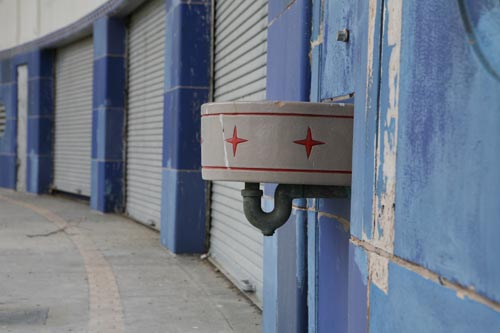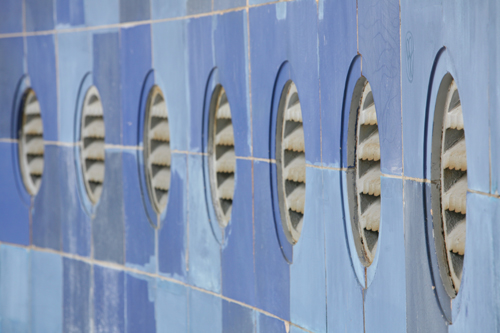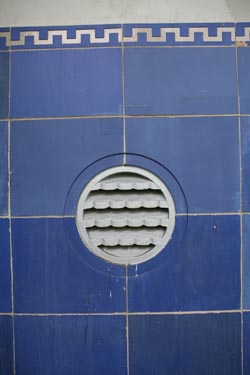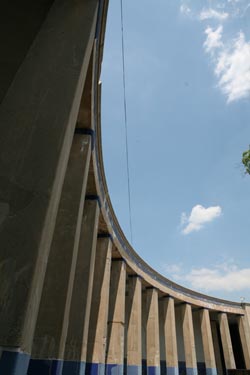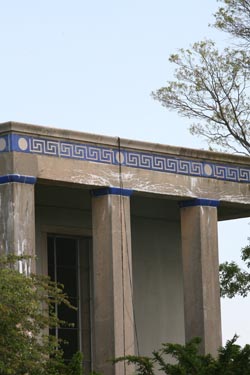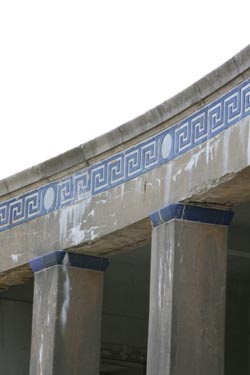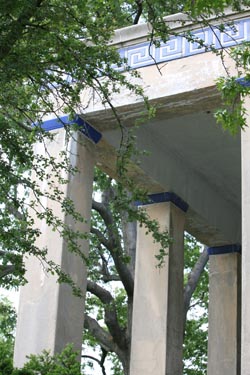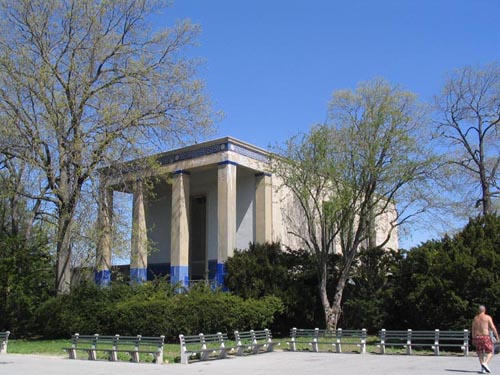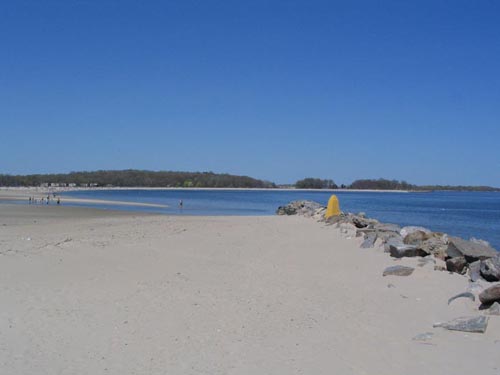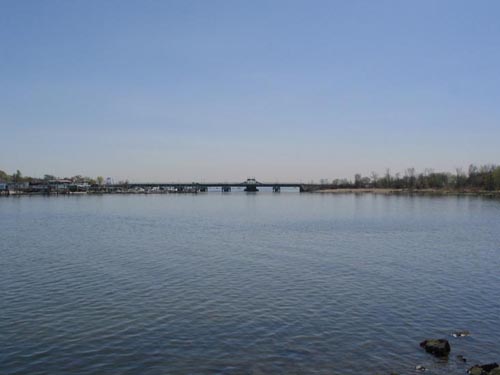Orchard Beach
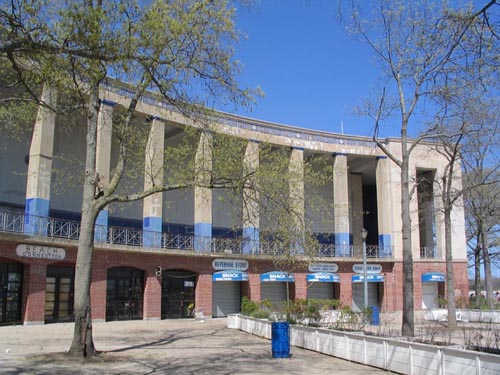
Bathhouse and Promenade
N.Y.C. Department of
Parks & Recreation
architectural consultant
1936
Orchard Beach, fronting on Long Island Sound in Pelham Bay Park, is a popular recreation facility known to all Bronx residents. Many would be surprised to learn that this was not a naturally occurring beach but was artificially created in 1936. Under N.Y.C. Parks Commissioner Robert Moses, landfill and millions of yards of brown and white sand were shipped from the Rockaways, Northport and Sandy Hook and pumped out through pipes to close the inlet of LeRoy Bay. This created a mile long seawall connecting the mainland with the earlier camp colonies of the northerly Hunter Island with the southerly Rodman’s Neck.
Creating these 115 acres of new land and mile long beach was a major engineering feat. It was, however, only the beginning of Moses’ ambitious $8 million plan for the site. This public works project included the demolition of existing structures and the building of a large bathhouse, wide promenade, seating areas, concessions, a parking field, game fields, playgrounds and picnic areas. At one point up to 4,000 relief workers, bused in from the Pelham Bay subway station, were kept employed on the Orchard Beach facilities during the Great Depression. This was the largest Works Progress Administration (W.P.A.) project in New York City at the time. Notably landscape architects Gilmore D. Clarke and Michael Rapuano, known for their work at Parkchester, also worked on the Orchard Beach project.
The Bathhouse is a two story curving structure that has concrete colonnades, embellished with blue terra-cotta tiles. Designed in a modern classical style, the Bathhouse is constructed of such economical materials as concrete, brick and limestone, along with tile and terrazzo. Central terraces on the upper level offer views of the waters of Long Island Sound, sailboats and flying seagulls. Looking west on the upper level while standing on the rose compass floor design, one can see the tall buildings of Co-op City.
The long Promenade is paved with hexagonal blocks. This is edged with iron railings, benches, and vent portholes using a nautical motif. The plaza is concave and a large terrace is set off against the curved colonnades of the Bathhouse.
When Orchard Beach opened on July 25, 1936 it was only one-third completed and there was only a temporary beach and Bathhouse. Most of the present Bathhouse, its colonnade plus the Promenade and parking lots, were still under construction. By the following year, the facilities were completed and the city planned additional expansions. In 1947, the beach was extended northward when the water between Hunter and Twin Islands was filled in. During the 1990s long overdue improvements and renovations were completed on the facilities. In 2006, the Orchard Beach Bathhouse and Promenade plus its benches, booths, stairways, flanking walls, lighting fixtures, railings, etc. were all designated New York City Landmarks.
Janet Butler Munch
Photographs:
Tom Stoelker
